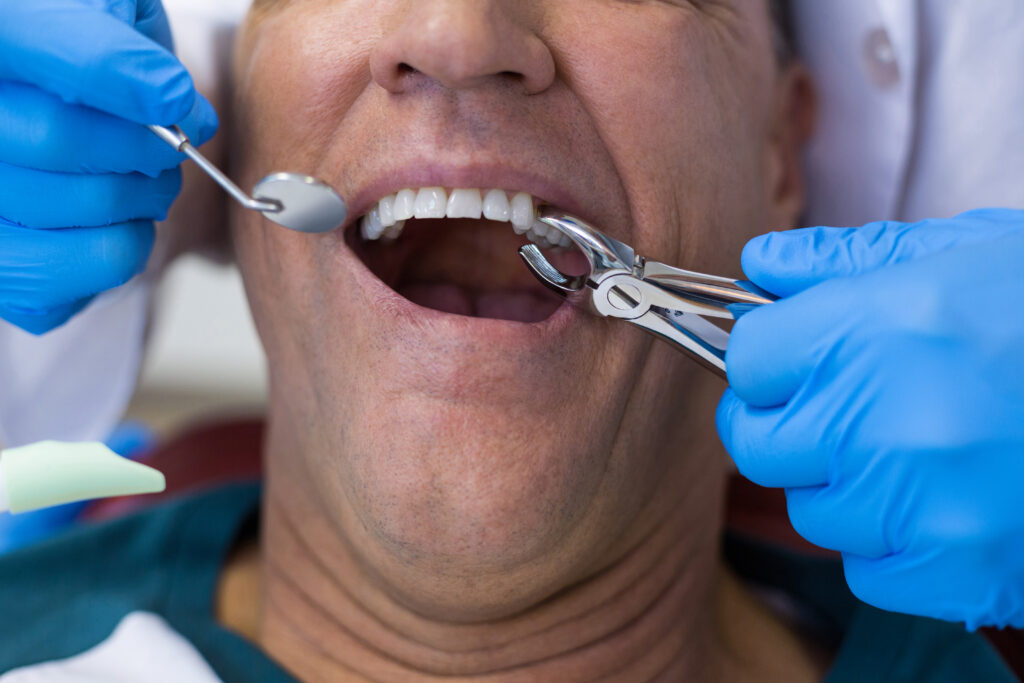Your first tooth extraction — what to expect
November 23rd, 2020
As this is the first time you have had a tooth pulled you may be feeling a bit nervous and afraid. Understanding what to expect could help relieve some of the anxiety you might be feeling.
Let’s look at what will happen and what you will experience in a simple extraction due to tooth decay.
Preparing the area
-
- Your dentist will give you a local anesthesia by injection. This will numb the gum surrounding the tooth extraction site. You may feel some temporary discomfort and sting from the injection. However, once the needle has been taken out, the effects of the anesthetics should take place within 3 to 5 minutes.
-
- Your dentist will next test for numbness by pressing the gum tissue surrounding your tooth area with fingers or a dental instrument. You will feel the pressure applied but no pain. If you do feel pain, tell your dentist and more anaesthetic will be administered.
The extraction process
The root part of a tooth is firmly encased in bone (its socket), and tightly held in place by a tendon that binds the tooth to the bone. To remove the tooth your dentist must use tools to loosen it. To do this:
- the socket will be widened and enlarged;
- the tooth will be separated from the ligament binding it to the bone;
- and when sufficiently loose your dentist will extract the tooth.
During the extraction
- The anaesthetic used in a tooth extraction inhibits nerve fibres that transmit pain but not those that sense pressure. As your dentist prods and probes to enlarge the socket and sever the ligament you will feel pressure. The pressure you will feel can be described as a slow and steady force applied in a controlled and deliberate manner.
- You should not feel any pain. If you do feel pain let your dentist know.
- Considering the dentist is working to pull a tooth from bone and tissue you may hear noises – a minor snap or breaking noise for example. Do not be alarmed. This is routine and nothing to worry about. If, however, you would prefer to block the sounds request a set of headphones.
After your tooth has been extracted
Once your tooth has been removed, your dentist will close the extraction site. This usually includes:
- scraping the walls of the empty socket to remove any infected tissue;
- using a saline solution to wash the socket to remove any loose bone or tooth fragments;
iii. compressing the sides of the expanded socket with finger pressure to help control bleeding;
- and putting a piece of folded gauze over your extraction site which you will be asked to bite down on. Applying pressure in this manner will help stop any bleeding.
Aftercare
Although a simple, single tooth extraction will only take 20 – 40 minutes, aftercare will take a few days. Before you leave the dentist’s chair you will be given a list of tips to follow in the hours and days following the extraction.
To maintain good oral hygiene and protect the extraction site from infection ensure to follow these tips.
If there’s a next time
If you need another tooth extracted in the future you will know what to expect and can rest easy knowing it’s not as scary as you once thought.
Sources
Animated Teeth, https://www.animated-teeth.com
Creative Dentistry, https://creativedentistry.ca/
Web MD, https://www.webmd.com/
Posted in Dental Care, Dental Services


